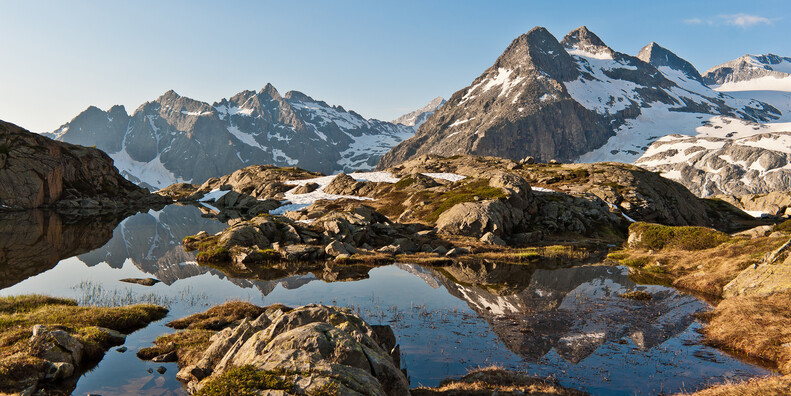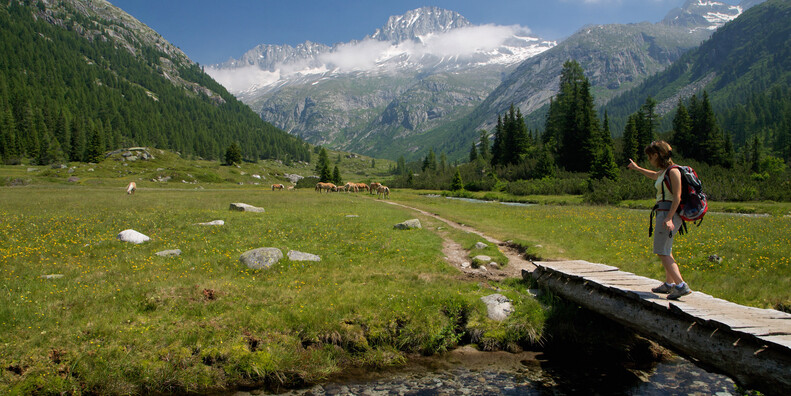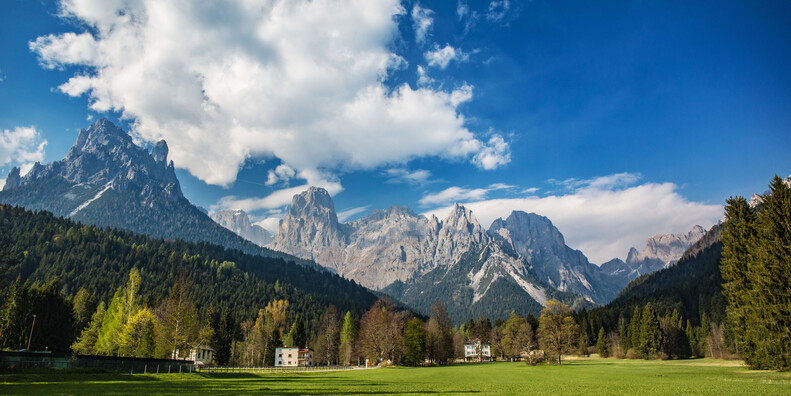THE GREEN GOLD OF TRENTINO IS BIODIVERSITY
Thanks to three natural parks and a widespread network of protected areas, 30% of this territory is under environmental protection. A natural environment to be experienced first-hand, respectfully exploring unique habitats where you can truly appreciate the extraordinary wealth of alpine flora and fauna
The safeguarding of the environment and its natural resources has deep roots in Trentino. Forests and mountain pastures where considered “common goods” already back in medieval times as can be discerned from the statutes of centuries-old institutions such as the Regole, the Consortèle and the Magnifiche Comunità which are still behind the management of these resources today.
About fifty years ago, in 1967, the province of Trento lay down a Provincial Urbanistic Plan, an early tool for the management of large areas and conceived to help deal with any requests or requirements that, during this period of economic growth, were beginning to be felt. One of these was an increased attention to the environment: the provincial Plan provided for the creation of two natural parks within the province, which may therefore be considered the first regional/provincial parks in Italy, alongside the already present Stelvio National Park.
The Adamello-Brenta Natural Park is the largest protected area in Trentino and one of the major parks of the entire alpine region. It encompasses the habitats of species such as roe deer, chamois, ibex, red deer and brown bear, this last species reintroduced to the area thanks to a one-of-a-kind European project. The waters of the park are home to the prized Arctic char, whereas in the skies above the golden eagle can be spotted and the more fortunate might even catch a glimpse of the rare bearded vulture. The park can be split geologically and morphologically into two distinct areas: the Adamello and Presanella mountain groups, characterised by vast glaciers, and the Brenta Dolomites, a UNESCO World Heritage Site. Both areas unveil their great wealth of biodiversity, even on the shortest of treks, in a theatre of unrivalled natural panoramas. Numerous accommodation facilities, local companies and schools are taking part in the “Qualità Parco” (Quality Park) project which has the goal of promoting a “slow” philosophy and sustainable management practices. Many hotels, guesthouses and camping grounds that take part in this project have been certified according to parameters set out by the European Charter for Sustainable Tourism.
In Eastern Trentino, straddling the valleys of Fiemme and Primiero and forming the “heart” of the Paneveggio-Pale di San Martino Natural Park, we have a vast forest of Norway spruce. Stradivarius would come here to select the wood for creating his unique instruments and even today, the spruce boards of Paneveggio thanks to their exceptional harmonics, are used to create much sought-after sound boxes. Above the “forest of violins” soar the Pale di San Martino Dolomites and the Lagorai group. The mountain meadows of the Val Venegia are the preferred habitat for colonies of marmots whereas the Val Canali is at the centre of a project for the development of biodiversity conservation and environmentally sustainable activities, from tourism to mountain agriculture.
The Stelvio National Park is a vast protected area in the heart of the Alps which stretches across the regions of Trentino-Sudtirol and Lombardy and includes the entire Ortler group. An area particularly rich in glaciers and with over 30 peaks above 3,000 metres. Created in 1935, it is one of the oldest parks in Italy and is home to numerous wild animals such as red deer, roe deer, chamois, marmots, stoats and the majestic golden eagle which was chosen as the symbol of this protected area.
The Trentino sector of the park, which has been under the direct management of the province since February 2016, includes the Val di Sole and the nearby valleys of Pejo and Rabbi, rich in thermal waters and which have managed to maintain a unique, yet spontaneous, architectural heritage of farmhouses and mountain stables. To explore this corner of Trentino you can take part in any number of organised excursions or weekly activities in the company of mountain guides and park wardens, suitable for all ages and available all year round.
Besides these “historical” parks, in the last 30 years a true “Network of Protected Areas” has developed in Trentino: 75 natural reserves and biotopes, 222 local reserves, 135 SCI (sites of community importance), 19 areas of special protection status and numerous protected areas along rivers. Adding up these numbers, we find that nearly 30% of Trentino is under environmental protection.
The whole network of protected areas met with the local community to address issues of sustainable tourism, obtaining certification from the European Charter for Sustainable Tourism (Carta Europea del Turismo Sostenibile, CETS).
Info: https://www.visittrentino.info/en/experience/green-holidays





